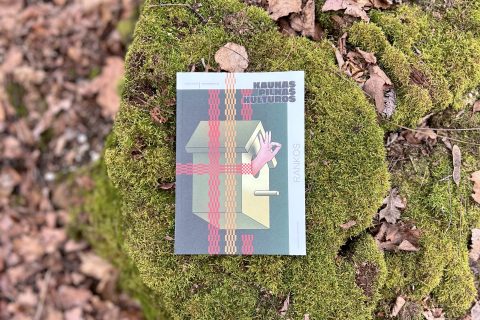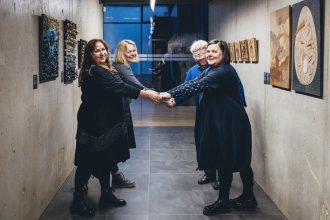When wandering through the narrow streets of the Old Town of Kaunas, I always take a look inside small boutiques, and in doing so, I have repeatedly surprised myself with pleasant discoveries. One of them is the Egidijus Rudinskas graphic art gallery, which existed on Kurpių Street for about 20 years and then a year ago was transferred to creators of a completely different branch of art, jewelers Agnė Žaltauskaitė (Agne Zaltauskaite Jewelry) and Kamilė Stanelienė (Lata Jewellery).
When I stopped by, I saw female artists creating jewelry from recycled paper, cans, or simply stones found in nature. We talked about creative processes, unusual materials used, and jewelry in a broader sense of the word, when it is not just an adornment but a separate art form.
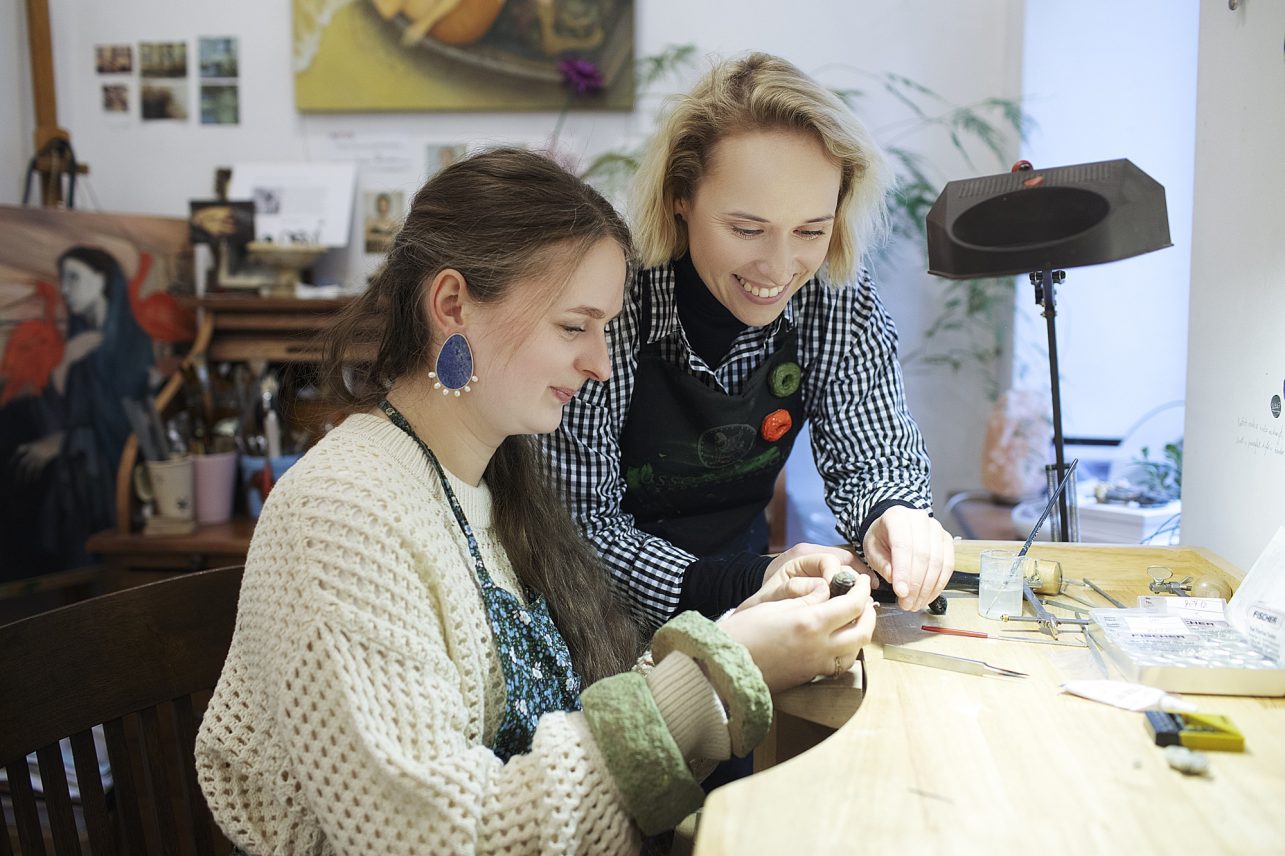
But let’s start from the very beginning. Agnė and Kamilė met in Telšiai where they both studied metal art and jewelry at the faculty of the Vilnius Art Academy there. “We were course mates but at the time we were not close friends. The connection was established only after returning to Kaunas,” Agnė said. After becoming friends and even before settling in Egidijus Rudinskas’ gallery, the artists worked at the Kaunas Arts Incubator. They had separate offices, but constantly needing to consult each other, they kept knocking on each other’s doors. “If there weren’t many people around, the doors would likely have been open all the time,” Kamilė added. In the long run, the artists started enjoying working together, so they decided to look for a place where they could settle together.
“We have been here, in the former gallery of graphic arts, for more than a year. After some time at the Arts Incubator, we decided it was time to change the environment. At first, I thought that I would leave on my own, but I couldn’t find anything worthwhile in the ads. One day I unexpectedly found an ad that showed a room with many paintings; such spaces are rare. I invited Kamilė to come see it with me and we both liked it immediately,” Agnė said. Once established, the artists repeatedly met people who accidentally wandered in looking for Egidijus Rudinskas and his paintings but were pleasantly surprised that the space was given over to other creators.
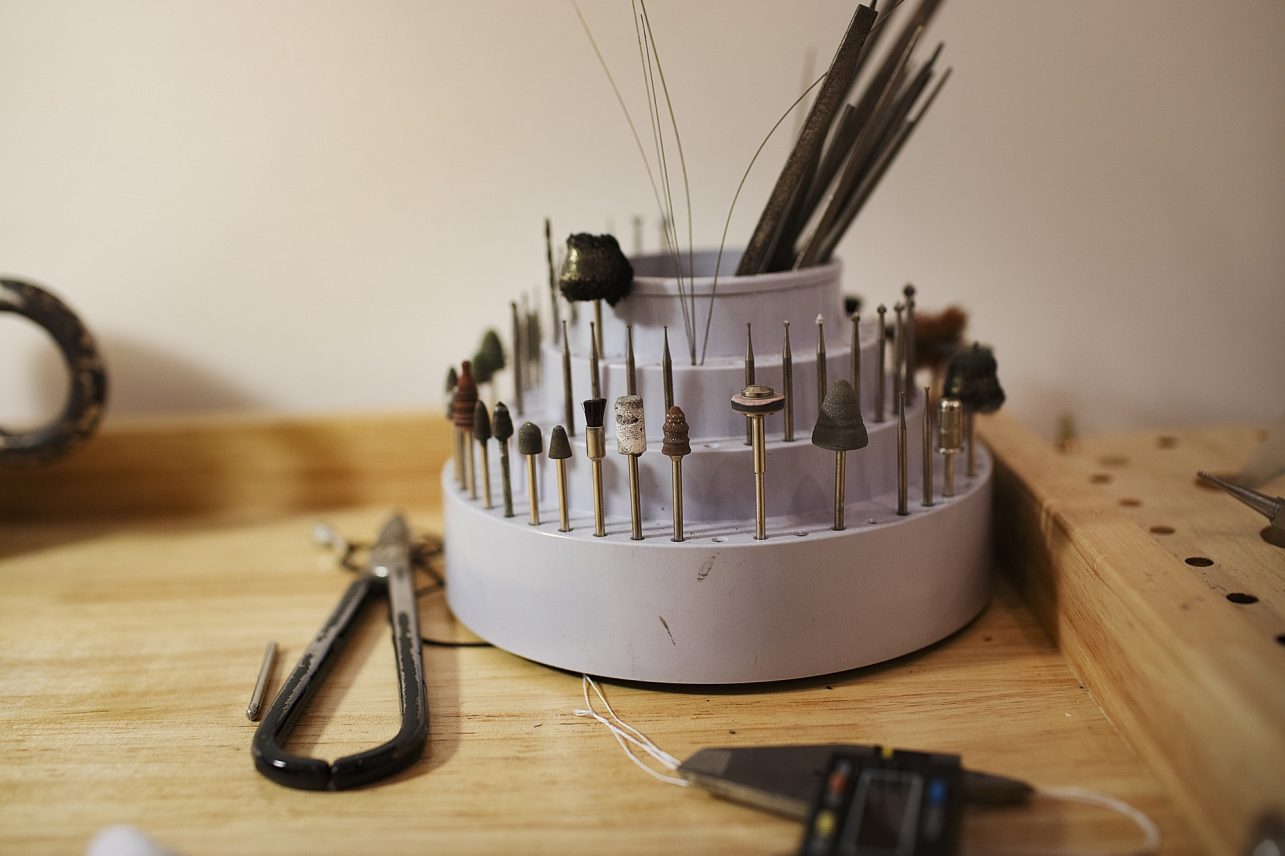
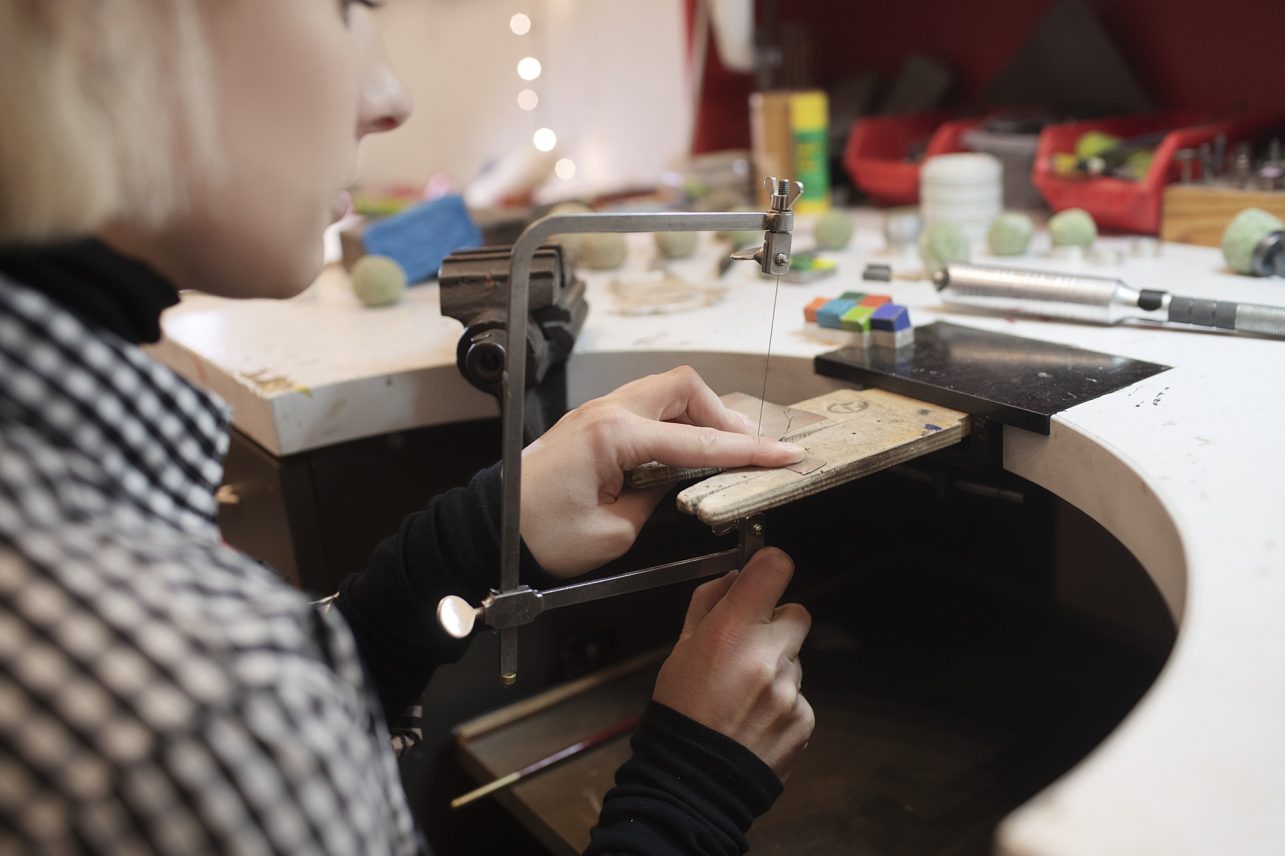
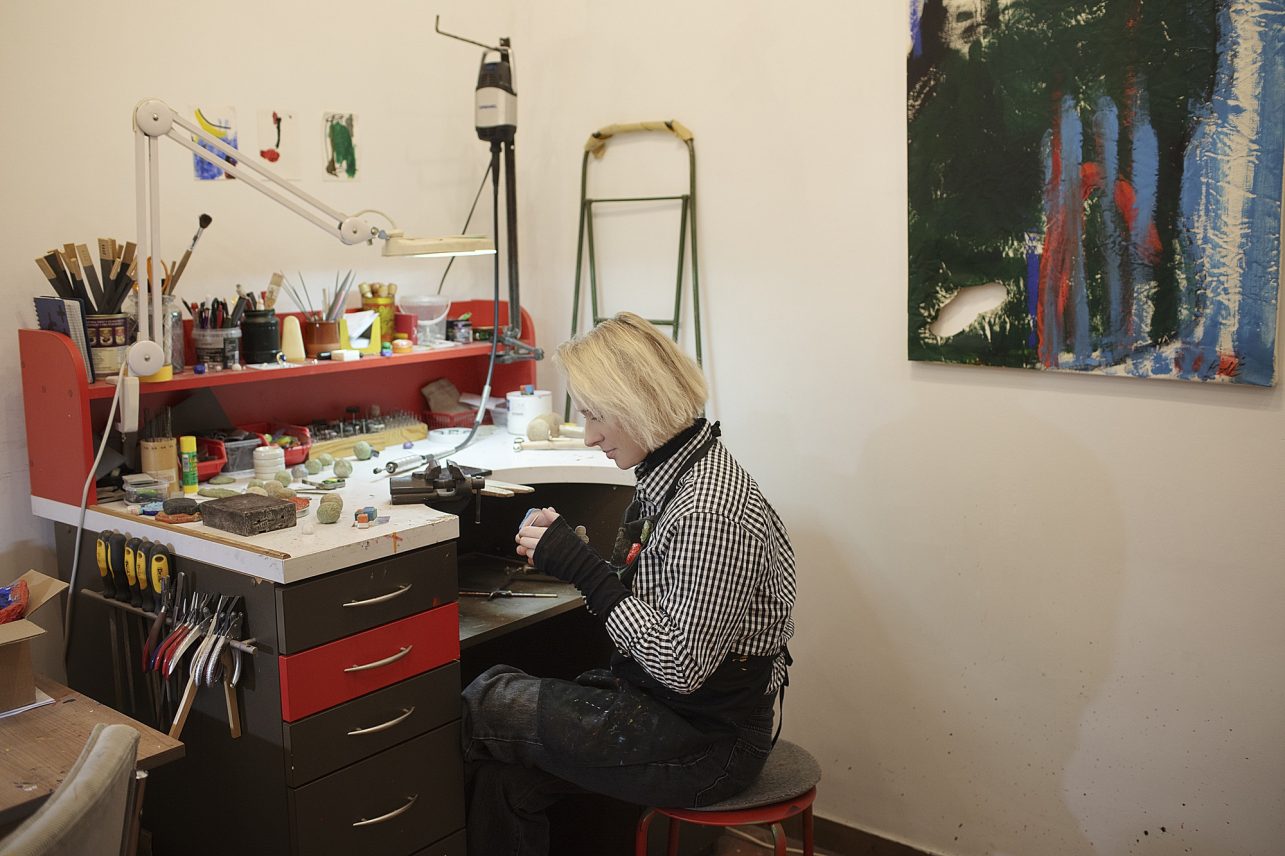
Of course, the desire to become a jeweler did not arise overnight. Both Agnė and Kamilė attended art schools and academies and went through the stages of painting and making beaded jewelry, which slowly led them to what the artists are doing now. Both knew quite early that they would study something related to art.
“For a long time, I thought that I would be an architect or an interior designer, but then I realized that these are extremely popular professions, and many of my friends were planning to choose similar fields, so I had to look for something else. When I heard about the Metal Art and Jewelry study program, I hesitated for a long time, I wasn’t sure if I could make a living from it, but in the end, I decided to give it a try,” Agnė recalled.
After graduating, the artists did not lose their desire to work with various materials; they took time to figure out what jewelry meant to them and what they wanted to work with specifically. And it seems that they were inspired unwittingly, “When creating, I follow two main paths: either I don’t think too much about anything and make something that I imagined spontaneously, or I simply collect all kinds of pebbles in the garden or a gravel pile and experiment with them. I don’t have a specific explanation; I just follow what comes from within. Although sometimes it happens that decisions are provoked by social or even political problems,” Kamilė said.
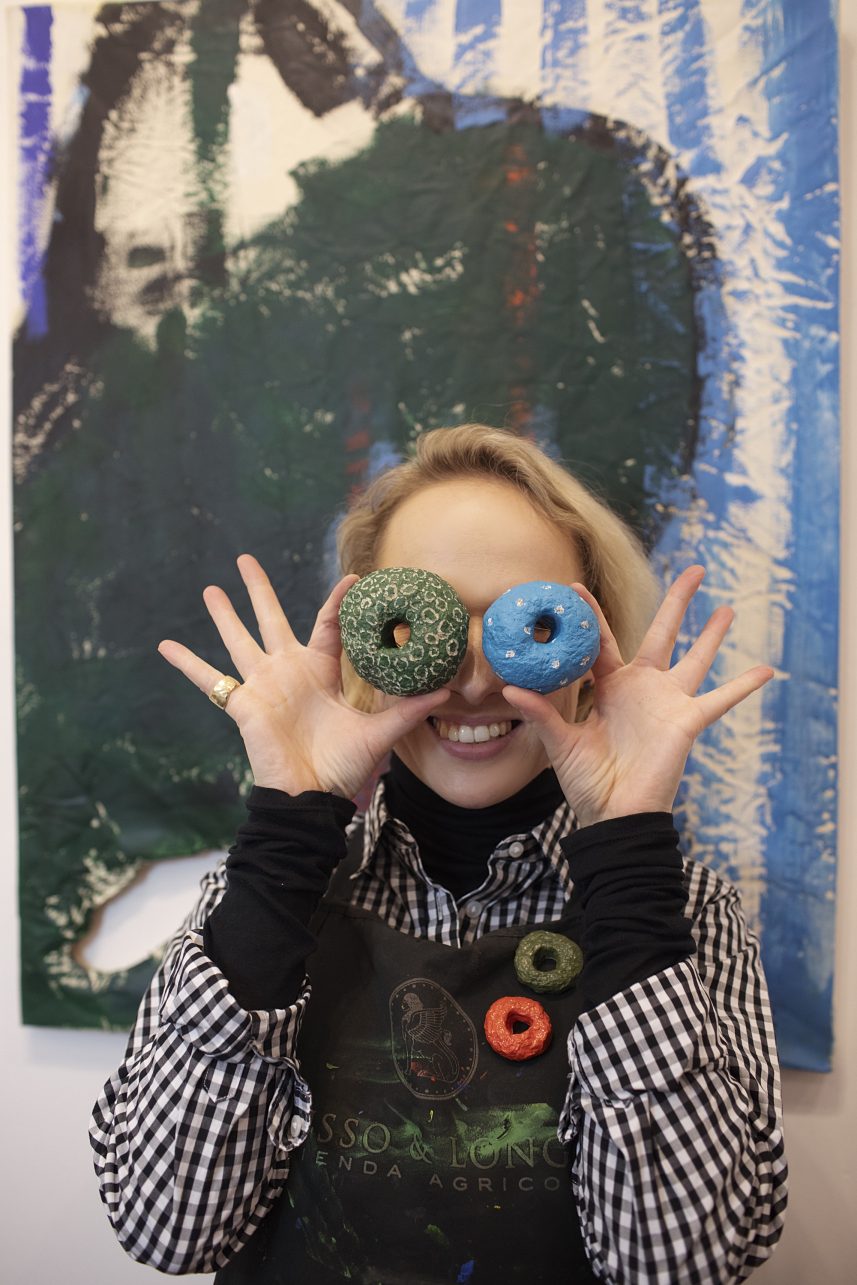
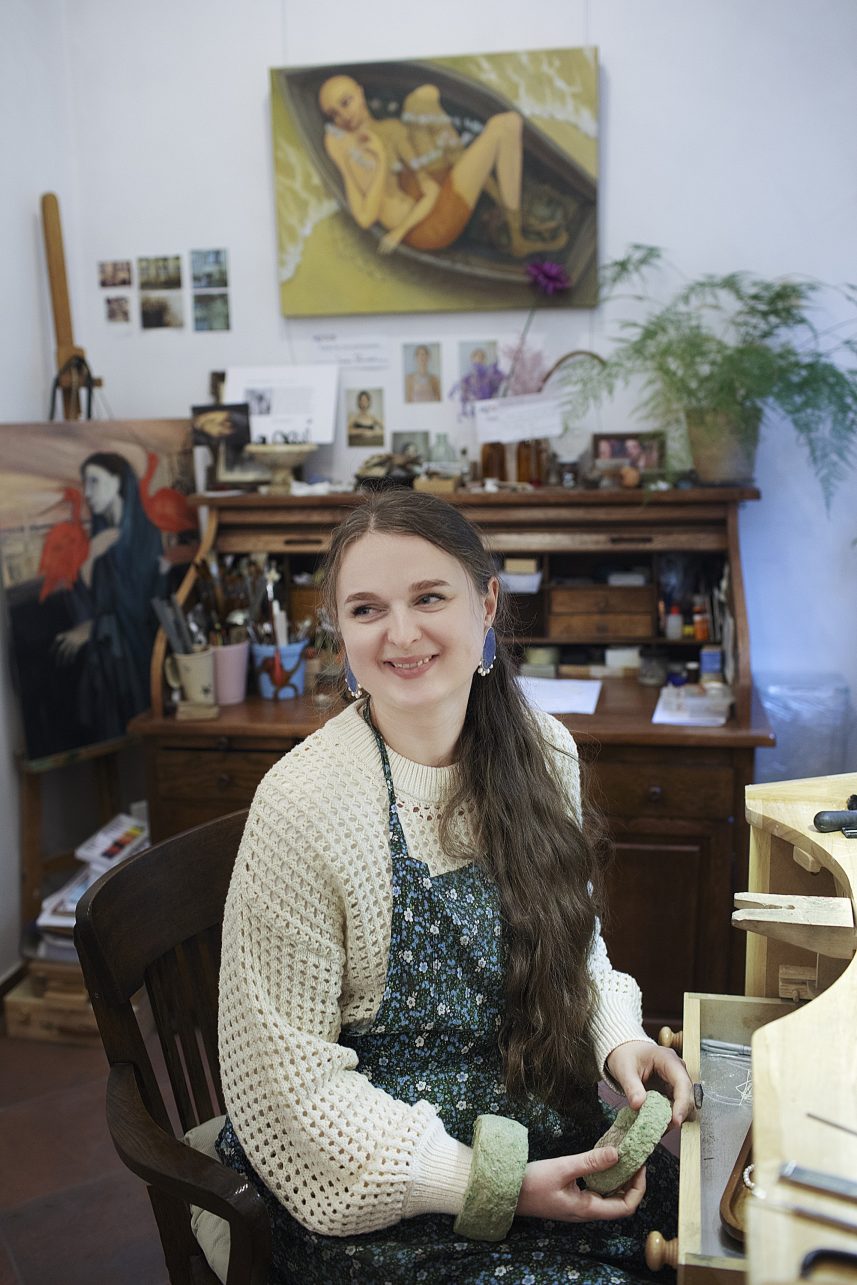
And perhaps it is not surprising at all, because both artists emphasized the importance of discovering one’s style, creating not only decorative details but also objects that can become independent works of art. In their view, modern jewelry is an art that tells a story, which usually arises not only from a specific idea, or a manifesto but also from a feeling.
To make it easier to convey that feeling, the jewelers choose materials that are somewhat unusual for many: recycled paper, cans, stones found on the ground, or pearls and mix them with silver.
“The materials I use came to me by chance. The choice of colors is important to me when I am creating. But metal is metal, and squeezing some kind of color is almost impossible. Once in my workshop, I saw that the neighbors were carrying a lot of cardboard boxes to throw away and I decided to grab them. After a while, I started playing with that paper and finally, the jewelry was born. The process was long and complicated, after all, paper is a fragile thing. Sometimes, people ask what I’m going to do next, and I cannot answer because every piece of jewelry is new to me, and the paper itself is a new material to me, so I’ll experiment until nothing surprises me anymore. Plus, I’m happy to reuse everything from toilet paper rolls to tea boxes. That’s probably why my motto is, ‘from trash to treasure,’” Agnė explained.
In my view, this is a great example of how a person creates the value of an object or changes its usual function. Kamilė only confirmed it, “I created a collection from can openers, cans, and pearls. And the reason behind using the cans is the desire to show that it is indeed a person, who really creates the value of an object. I think it is a great example of the change in the value of different things. And after I started to analyze existential themes more, it all turned into a paradox: I began to create the same cans from silver. The can is garbage, but it has acquired the form of a precious metal. And such a seemingly trash-like object can be combined with elegance, pearls.”
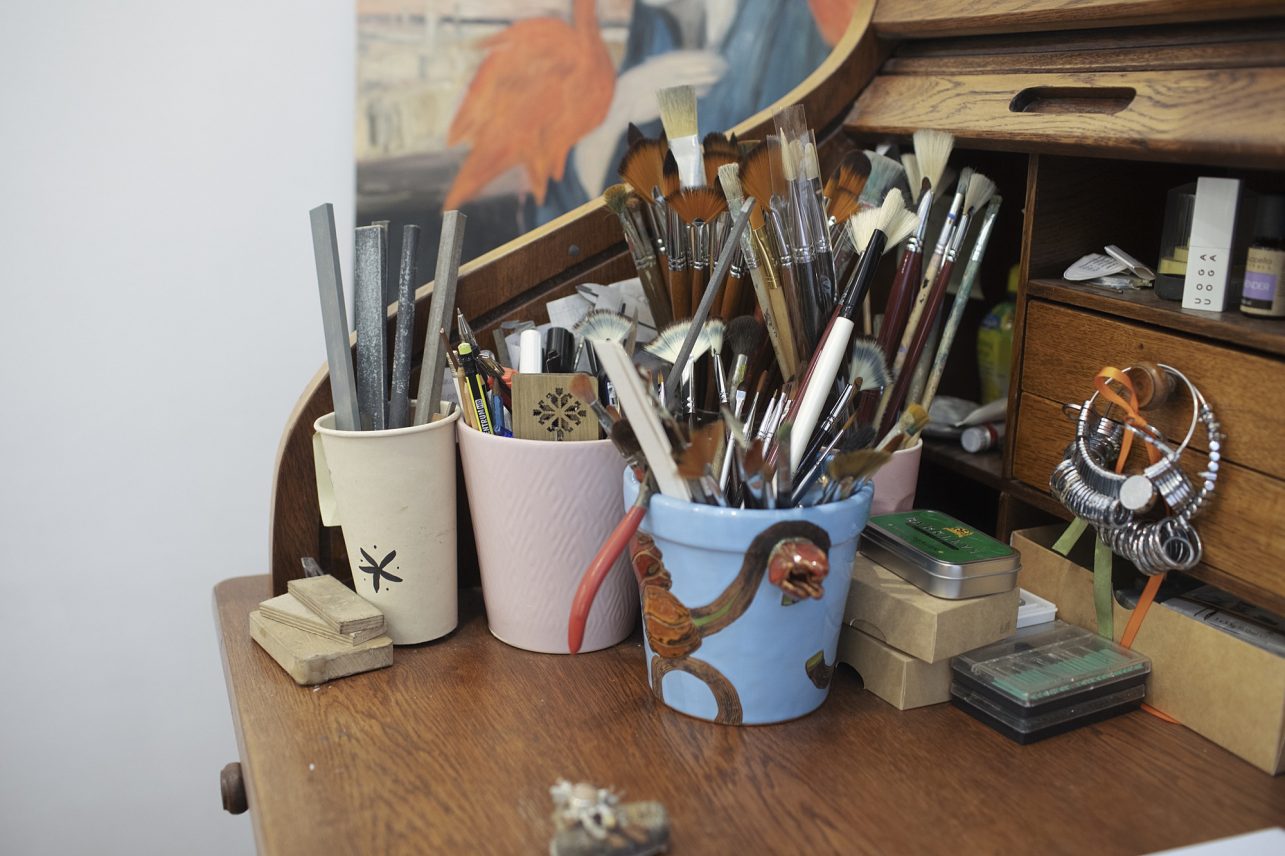
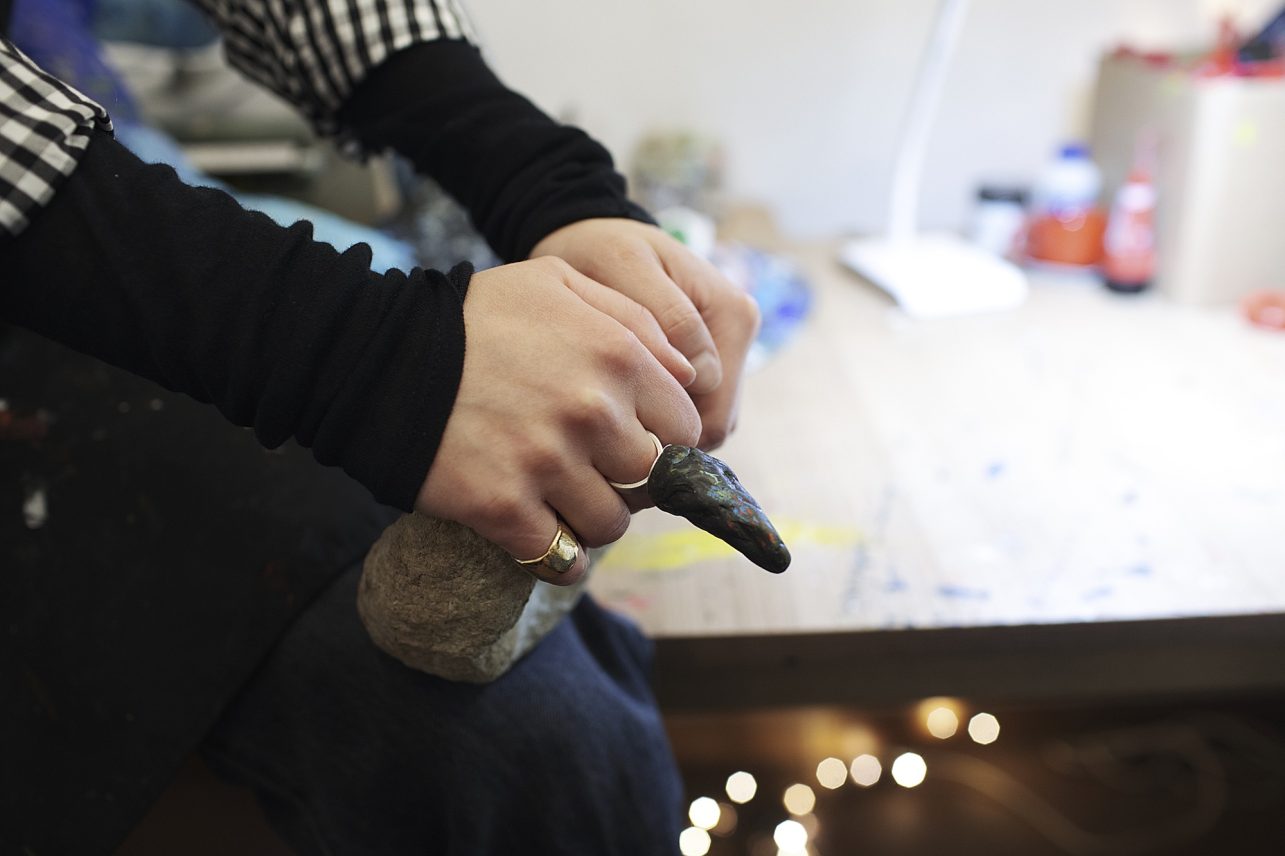
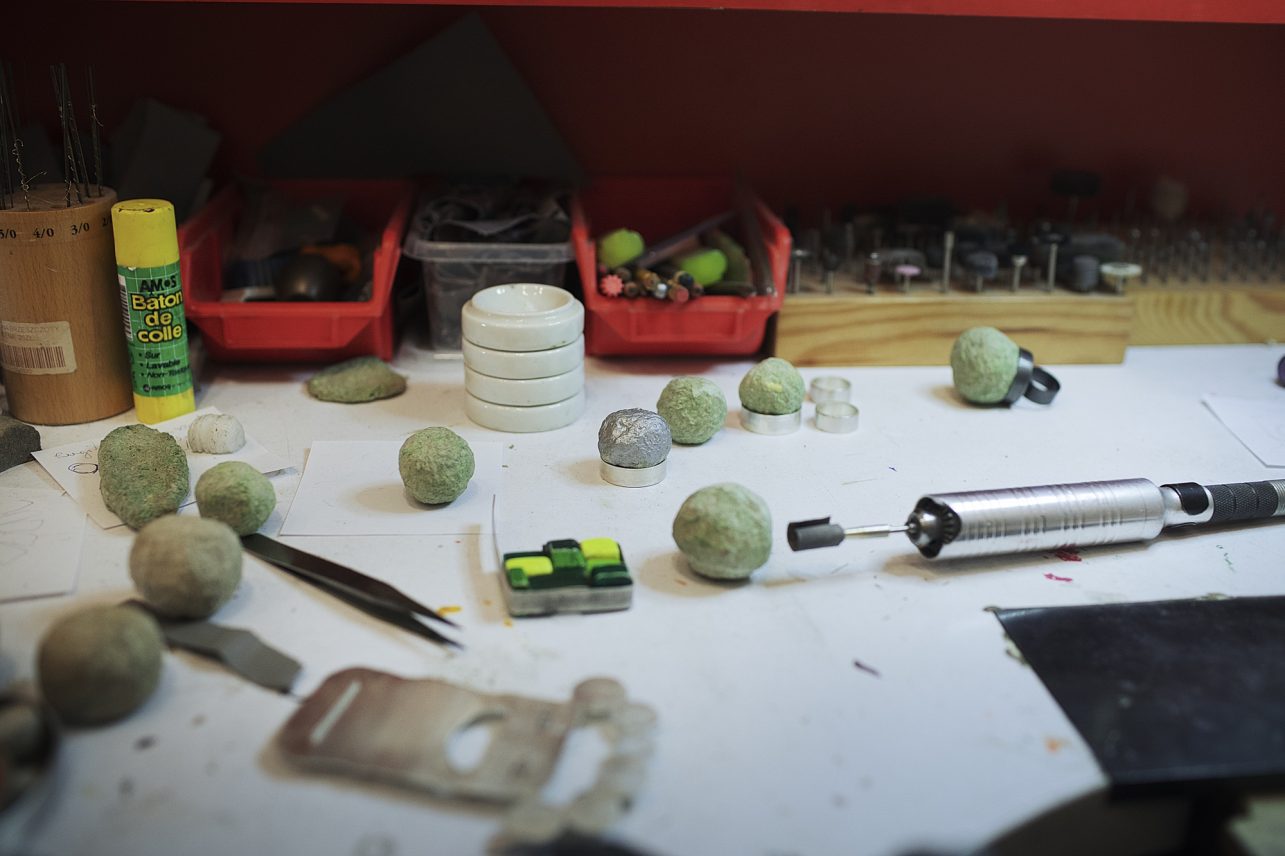
In one of her collections, Agnė also uses rather brutal materials that are combined with everyday tools. All this was inspired by the interwar period architecture of Kaunas. “To be honest, I didn’t feel much love for Kaunas before, and I didn’t live in the city center, I usually just went from point A to point B. That’s probably why I never paid attention to the beauty of the city. But when I discovered Pokemon GO, I walked so much every day that I probably traversed the whole city. Gradually, I started noticing various details, including round windows or elaborate doors and other unusual shapes. I discovered what Kaunas was like during the interwar period and I was able to compare what was left and what did not survive. Perhaps it was after that that my interwar period jewelry collection was born inspired by the interwar period modernist architecture of my hometown. I even used materials from historical buildings for the creation of this collection, preserving their imperfections and authentic charm.”
What an interesting idea, to manipulate the usual value of an object! That’s when a question popped up in my head: what exactly is jewelry, which many perceive only as an adornment, not as a work of art? “I call my jewelry a wearable sculpture. We organize exhibitions the same way as painters or sculptors do. Most of the time we do it not to sell the items, but to show our artwork; it is a form of self-expression. Kamilė and I consider ourselves as creators of conceptual jewelry,” Agnė said.
And what are your immediate plans? “The only thing that comes to mind right now is the jewelry exhibition Inhorgenta in Munich, Germany (it took place in February, ed.). This is probably the main art jewelry event in Europe, during which the whole city is filled with galleries. It was a distant dream for some 7 years, and now it has become a reality. A little unexpected, but very nice. That is why Kamilė and I remind each other from time to time that dreams are not as unattainable as we would think and we can dream even bigger. And then, if we’re lucky, we will go even further,” Agnė concluded the interview.

